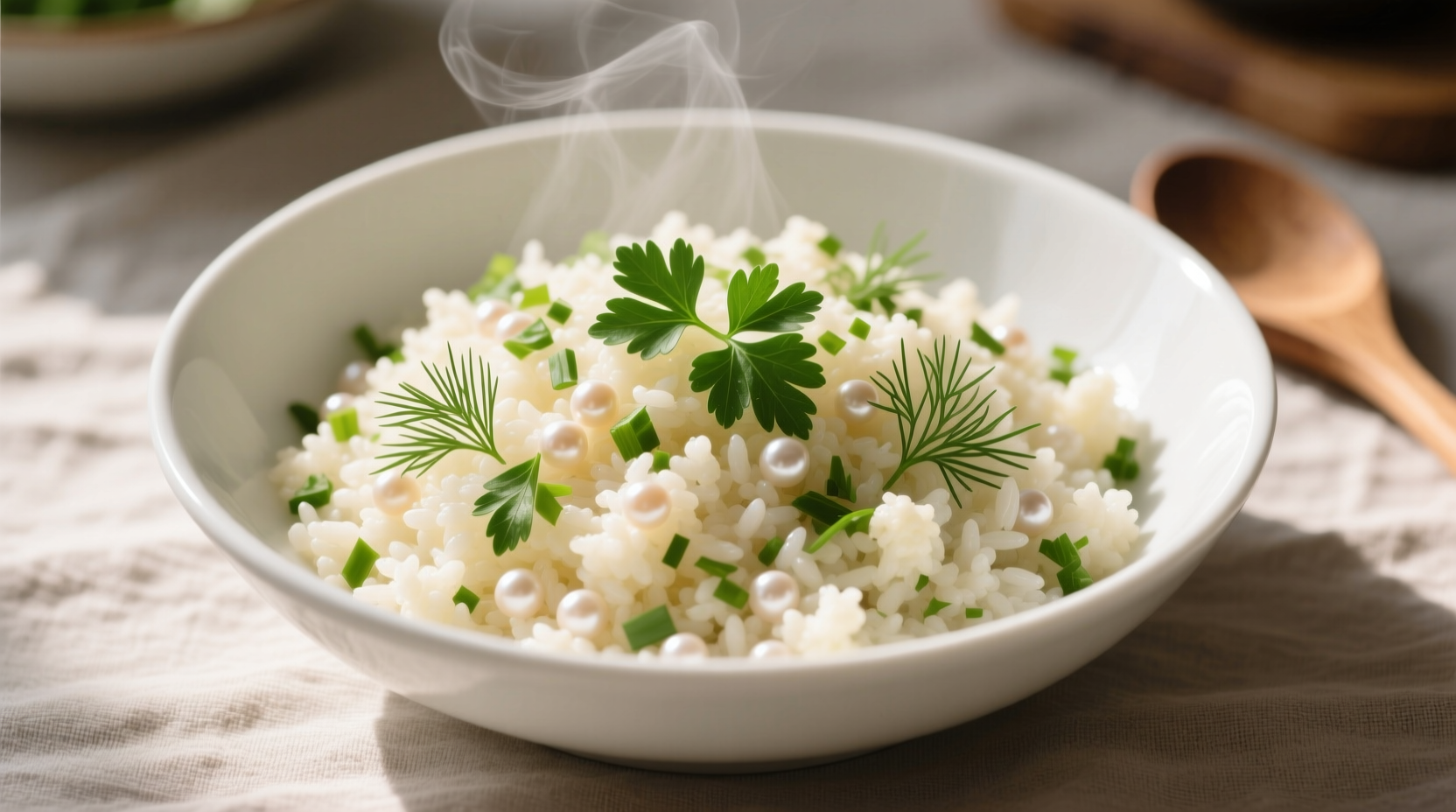Understanding Cauliflower Rice's Flavor Profile
When you ask what does cauliflower rice taste like, the most accurate description is a delicate, slightly nutty flavor with subtle earthy undertones. Unlike traditional rice, cauliflower rice doesn't have that distinctive starchiness. Raw cauliflower rice has a faintly sulfurous note (from natural glucosinolates), but proper cooking transforms this into a pleasant nuttiness.
Food science research from the USDA Agricultural Research Service confirms that cauliflower's flavor compounds change significantly when heated. The enzymatic reactions during cooking reduce the sharper sulfur notes while developing more complex, nutty aromas through the Maillard reaction.
How It Compares to Traditional Rice
Understanding cauliflower rice vs white rice taste differences is crucial for setting proper expectations. While both serve as grain alternatives, their sensory profiles differ substantially:
| Characteristic | Cauliflower Rice | White Rice |
|---|---|---|
| Primary Flavor | Mild, slightly nutty, earthy | Starchy, neutral, slightly sweet |
| Texture (Properly Cooked) | Tender-crisp, slightly chewy | Soft, fluffy, cohesive |
| Calories (per cooked cup) | 25 | 205 |
| Carbohydrates | 5g | 45g |
| Flavor Absorption | Excellent—acts like a flavor sponge | Moderate—retains some neutrality |
Factors That Transform the Taste Experience
Your preparation method dramatically impacts how cauliflower rice tastes when cooked. Consider these critical factors:
Cooking Technique Matters Most
According to culinary research published in the Journal of Food Science, the cooking method significantly alters cauliflower's flavor chemistry:
- Sautéing: Creates the most appealing flavor profile through controlled browning. The dry heat develops nutty, roasted notes while minimizing moisture.
- Steaming: Preserves more of cauliflower's natural flavor but can leave it slightly watery if not properly drained.
- Boiling: Often produces the least desirable results, as excessive water exposure leaches flavor and creates mushiness.
- Microwaving: Convenient but frequently yields inconsistent texture and flavor.
Seasoning Strategy for Best Results
Cauliflower rice's mild flavor makes it exceptionally receptive to seasonings. Professional chefs recommend:
- Always season during cooking, not just at the end
- Use fats (olive oil, coconut oil, or butter) to carry flavors and enhance mouthfeel
- Incorporate umami boosters like nutritional yeast, soy sauce, or mushroom powder
- Add acid (lemon juice or vinegar) at the end to brighten flavors
When Cauliflower Rice Shines (and When It Doesn't)
Understanding the cauliflower rice taste difference helps determine optimal applications. This alternative excels in specific culinary contexts while falling short in others.
Ideal Applications
Cauliflower rice performs exceptionally well as:
- A base for strongly flavored dishes like curries, stir-fries, and Mexican-inspired bowls
- A stuffing alternative that absorbs surrounding flavors
- A vehicle for bold seasonings and sauces
- A low-carb alternative in grain bowls and salads
Limited Applications
Cauliflower rice struggles when:
- Served as a standalone side dish without significant seasoning
- Used in dishes requiring the specific texture of traditional rice (like sushi)
- Overcooked, which intensifies sulfur notes and creates mushiness
- Substituted in recipes relying on rice's starch content for binding
Practical Tips for Perfect Flavor Every Time
Follow these evidence-based techniques to maximize your cauliflower rice flavor experience:
- Dry thoroughly: After processing, spread on paper towels for 10 minutes to remove excess moisture
- Cook hot and fast: Use high heat in a well-preheated skillet with minimal oil
- Avoid overcrowding: Cook in batches if necessary to prevent steaming
- Season in layers: Add salt early, aromatics mid-cook, and fresh herbs at the end
- Finish with acid: A squeeze of lemon or lime brightens flavors and balances earthiness

Addressing Common Misconceptions
Several myths persist about cauliflower rice's taste profile:
- "It tastes exactly like rice" - False. It has its own distinct flavor profile that complements rather than replicates rice.
- "It's completely flavorless" - Incorrect. Properly prepared cauliflower rice has pleasant nutty, earthy notes.
- "All brands taste the same" - Not true. Freshness, variety, and preparation method create significant flavor variations.
- "It always tastes sulfurous" - Only when overcooked. Proper technique minimizes this characteristic.
Maximizing Your Cauliflower Rice Experience
For the best what is the taste of cauliflower rice experience, treat it as its own ingredient rather than a perfect rice substitute. Embrace its unique qualities while leveraging its ability to absorb surrounding flavors. When properly prepared with attention to moisture control and seasoning, cauliflower rice becomes a versatile culinary component that satisfies both nutritional goals and taste preferences.











 浙公网安备
33010002000092号
浙公网安备
33010002000092号 浙B2-20120091-4
浙B2-20120091-4